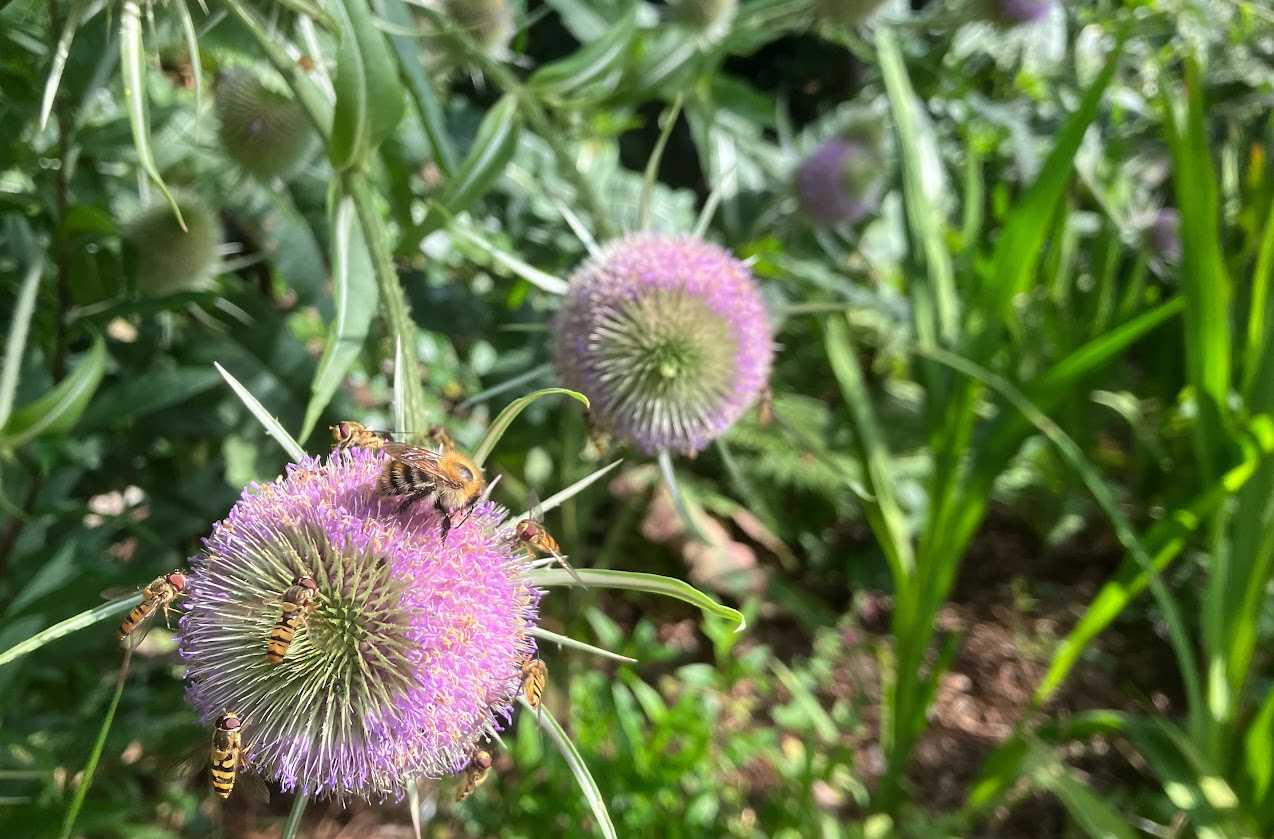Teasels
29 July 2023

All summer long the self-seeding teasels have lined the path, like bystanders watching the spectacle of the vegetable patch. We’ve felt their presence, their silent gaze observing everything we do.
Last year, in their youth, they were toothed rosettes of basal leaves peeping out between the grasses and rudbeckias. This May, they hit adolescence and shot up straight reaching six foot plus in a few weeks. At one point, when the strawberries started flowering, they each had a single, conical head balanced on a ruff of spiny bracts. During June, multiple heads formed, prickly from a distance, but up close, soft to touch - unlike their barbed stems, which snatch and catch at anything that comes too close.
Now, in July, the heads bend incrementally with each new ring of purple inflorescence. Their crowns nod while the hoverflies fuss, the bees work, and a dry hum resonates. Yet further down the line, in the hard, cracked earth by the box hedge, their siblings fare less well. Seeded at exactly the same time as the others, four plants chose not to flower this year. Although often referred to as biennials - putting on leaf-growth in the first year, flowering and seeding in the second - if teasels are unable to absorb enough nutrients in the first year, they will not flower until the third.
It is in each teasel’s interests to be as prolific and resplendent as possible, no matter how short-lived the glamour. The straight backs of this year’s blooms are already curving any which-way towards the sun, stooping and contorting. On dark, thunderous days, the bulbous heads sway like aged, blind eyes seeking out the light beneath the low cloud. By August, just as the tomatoes ripen, the heads will be reduced to a faded, moribund yellow, and, by September, they will acquire the brown shades that dominate their afterlife.
All through the winter months, long after the last apple is eaten, the teasels will stand, stiff as sentinels, defending the flowerbed. Insects will move into emptied seed cavities. Birds will use them as feeding stations and perching posts. Spiders will swing their webs from crown to crown, while water frosts, freezes, and melts in the leaf junctures, over and over again.
In spring, the blackened relics will leer down at green rosettes forming at their feet: as I am now, soon you will be. Spent and shrivelled, spotted with spores, spectacular even in decay, they always steal the show.
